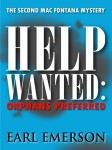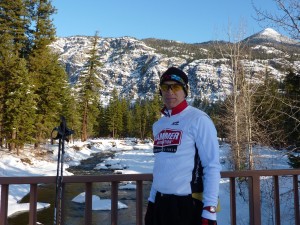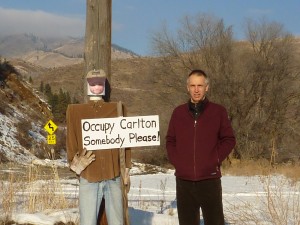“The trouble with quotes on the internet is that it’s difficult to determine whether or not they are genuine.”
– Abraham Lincoln

One of the best days of the year was spent hiking up at Sunrise on Mount Rainier. The wildflowers were prolific and awesome and the day simply splendid.
I’m currently finishing up the polish on a Thomas Black. I have no publisher lined up and no real plans as to which publishers I will approach when the time comes to market the thing.
I’m putting the finishing touches on Thomas Black # 13 and enjoying the process very much. For the most part, I find I enjoy writing a book as much as I enjoy reading a book. True, the process of writing, for me, is tortuous at best. I have friends who write a book straight through, cleaning and polishing as they go along, so that when they get to the final chapter, the book is nearly finished, maybe a week of polishing and then it gets sent to their agent. Oddly enough, one friend who writes this way claims he hates the actual writing. I love the actual writing, though it is a long and winding road. Others dash off a book in thirty days. I could dash off a book in thirty days, but you wouldn’t want to read it.
A good book, for me, is a book that has a certain balance between the language, the use of English, and the storyline. In other words, the craft counts. Good craft doesn’t always show, but it makes a huge difference in the end product. Every reader doesn’t feel that way and certainly, as stated earlier, neither does every writer, but I do.
I don’t know any other way to do it. I try to write the kinds of books I would like to read. I’ve known writers who write for an imaginary reader, some imaginary reader they’ve locked into their minds as “the typical reader,” but I simply don’t know who that person is and more often than not, neither do they. The best writers, I think, write for themselves. If their taste is catholic enough, and they are not too weird to bring empathy to themselves, others gravitate towards their writing, too. I know who I am, what I like and what I’ll read, so I work to that. Given those parameters, I’m amazed and sometimes puzzled by who my readers turn out to be. Most are women. But then, most readers of novels in this country are women. By and large, men’s brains have gravitated to sports, TV, video games and other pursuits. On the other hand, a lot of couples read my books. That is good. I rarely read the same books my wife does and vice versa.
I write my books straight through, polishing as I go, and then I go back and start from the beginning, do the whole thing again, rewriting endlessly. I don’t stop until I can’t make it any better. For me, that takes a long time and a lot of rewrites, many, many drafts. I am not a good first-draft writer. If you saw the first drafts of anything I’ve written you would agree. But I do have the tenacity to continue with rewrites until I get it more or less right. A writer friend once asked me why I put myself through all that agony. She dashed her books off rather quickly, got them published to reasonable acclaim, and thought I was wasting a lot of time. Maybe so. She reads my books, or claims to. I cannot get through hers.
A mystery writer friend and I were talking once about popular fiction and I mentioned a very popular mystery writer, someone who’s still working and asked if he’d ever read her. “I read a paragraph once,” he said, as if that was all that needed to be said.
“Why only a paragraph?” I asked.
“Because I wasn’t interested in reading a whole book by somebody who was capable of writing that paragraph.” I’ve never forgotten his words, probably because in some measure, I feel the same way — and fear the same criticism.
Needless to say, for this man, the writing itself was part of the pleasure in reading. Ironically, the writer he was criticizing is still going great guns while he has long ceased to be published. Perhaps this is related to their writing styles, or lack of same. I think maybe not. A lot goes into making somebody a bestseller, not the least of which is some consistent good luck, which he never had and she encountered in spades.
I like to read people who, among other things, write sentences I wish I had written. If I can read an entire book without finding one of these, it’s likely I won’t come back to that author. It is possible to write a really good book without any quotable lines, but rare, I suspect. One person who does a pretty damn good job of it is Michael Connelly. His prose is practiced, polished, and deceptively simple.
So, once again, I continue to write draft after draft, let the paint dry, go back and look at it the next day or the next week, and rewrite it once again. One thing I have going for me now is I’m no longer working for the Seattle Fire Department, having retired last September. So I’m working six days a week and am rarely tired, cranky or sleepy while working. The books should come faster and easier. So far this one is.
Next: why a Thomas Black now? And why the big gap in time?
 The first four Mac Fontana novels are now on Kindle. Number five, the last one, will be showing up shortly. If you read them a long time ago, they’re a hoot to read again, and if you’ve never read one, The New York Times listed the first one, Black Hearts and Slow Dancing as one of their ten best mysteries for that year. After re-reading these, I’m not sure why I ever stopped writing the series. Enjoy.
The first four Mac Fontana novels are now on Kindle. Number five, the last one, will be showing up shortly. If you read them a long time ago, they’re a hoot to read again, and if you’ve never read one, The New York Times listed the first one, Black Hearts and Slow Dancing as one of their ten best mysteries for that year. After re-reading these, I’m not sure why I ever stopped writing the series. Enjoy.















